A deeper look into the work of those leading charge in the effort for a coronavirus vaccine.
As COVID-19 sweeps across the world infecting thousands per day, thousands more news articles sweep across the internet doing little to no actual reporting on the subject. With all the buzz about ventilators, flattening the curve, social distancing, and face masks, one would think there would be a lot of buzz around the 70 vaccines currently in development (1). Yet, there isn’t. With the number of possible vaccines increasing every week, it’s important that people stay informed about all these potentially life-saving solutions.
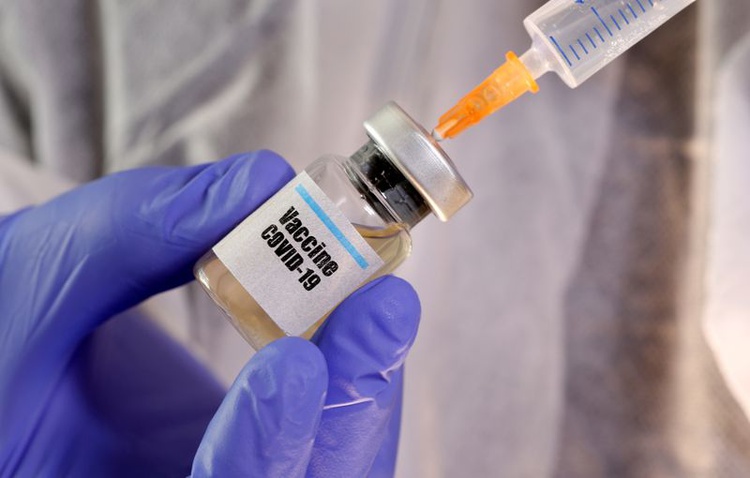
Among the 70 vaccines in development, there are a wide variety of approaches being taken. There are traditional approaches such as inactivated virus vaccines—live attenuated virus vaccines— and protein subunit vaccines. There has also been headway into newer amino acid vaccines like plasmid DNA vaccines, chromosomal DNA vaccines, and mRNA vaccines. Lastly there are a select few ambitious ones, like particles or VLP vaccines which try to mimic how the virus would act without transferring any disease (1). However, while 70 organizations claim to be working on a vaccine, only three of those 70 vaccines are in clinical trials. Of those three vaccines, there are two from the United States and one from China. One of two from the U.S. comes from Cambridge-based Moderna inc. and the other is from Inovio Pharmaceuticals in Pennsylvania. The sole Chinese vaccine in testing hails from Beijing-based CanSino Biological inc.
Moderna and their sponsor, the NIH (National Institutes of Health) (1), elected to make a fairly new type of vaccine called a lipid nanoparticle encapsulated mRNA vaccine (1). Unlike conventional vaccines which use parts of the actual virus to stimulate a response, this mRNA vaccine will put a small strand of COVID-19 mRNA into the recipient’s cells which will produce a non-infectious COVID-19 protein (2). This rogue protein then stimulates an immune system response that will wipe out all the COVID proteins and contaminated cells (2). This sets a precedent for the body to attack that protein whenever it’s found. Thus, whenever COVID-19 enters the body, that protein will be present, and the body will instinctually attack it (2).
Moderna’s clinical trial for the vaccine began on March 3, 2020, and is supposed to end on June 1, 2021 making it the first COVID-19 vaccine to begin clinical testing (3). Even though the trial is expedited, the general plan for how to carry out the study remains the same. During the first phase of the trial, Moderna created three groups of 15 individuals from Washington State, Georgia, and Maryland (3). Of the three groups, one was given a 25 microgram dose of mRNA, the second a 100 mcg dose, and the third a 250 mcg dose (3). Half of the amount was administered on the first day, and the second half was given four weeks later (3). While this early start from Moderna looks to be promising, Pacific CanSino Biological is giving them some stiff competition.
The sole Chinese vaccine comes from a joint effort between CanSino Biological Inc. and the Beijing Institute of Biotechnology (1). Partnering together, the two groups rapidly developed a conventional non-replicating viral vector vaccine (1). Viral vectors work by using a seperate, weakened virus to deliver fragments of the target virus into the cell (6). In this case, CanSino uses a non-infectious version of the adenovirus serotype-5 (7), a common strain of the cold (6). The serotype-5 virus will carry a non-infectious piece of COVID-19. Once detected, that COVID fragment will cause an immune system response (6).
CanSino’s trial started on March 17 with 108 individuals from the Wuhan province (8). Like the Moderna trial, the individuals were split into three groups with varying dosage intensity. The first group received 50 billion adenovirus particles, and the second and third received 100 billion particles each (8). Less than a month after phase 1 began, on April 12, CanSino announced that after “preliminary success” they have begun a phase two of the study, although they provided no evidence of this “preliminary success” (11). While phase two is an advancement in the trial, phase one will continue for its remaining five months (11). The phase two trial is also set in the Wuhan province and contains a total of 500 participants that will be split into three groups (11). One group of 250 will receive a 50 billion particle injection, a second group of 125 will receive a 100 billion particle injection, and a third group of 125 will receive a placebo injection (11, 12). This larger scale phase is set to end on January 31, 2021 (12). This abrupt beginning of the second phase without providing any proof has brought the ethicacy of the Cansino trial into question, with some hypothesizing it is an attempt by the Chinese government to gain an upper hand against its U.S. competitors (11).
The second of the two U.S. competitors is Inovio and their DNA plasmid vaccine delivered by electroporation (1). DNA vaccines act similarly to mRNA vaccines as they both produce proteins to engineer a response. This DNA vaccine takes a specific sequence of COVID-19 DNA and puts it into a circular strand called a plasmid (14). Once the vaccine is injected, Inovio’s handheld electroporation device simulates the area of the injection using electricity (14). This electric pulse opens up the cell membrane allowing the plasmid to enter the cell (14). Once inside the cell, the plasmid begins producing the specific COVID protein to get the attention of the immune system (14). The trial for this revolutionary new style of vaccination began on April 6 with two groups of 20 participants from Philadelphia and Kansas City (13). One group is given a 2 mg dose and the second gets a 4 mg dose (13). While Inovio started about a month after its closest competitors, the company’s leaders remain hopeful to finish the trial in the next 10-12 months.
Currently, these are the only three in clinical testing (1); however, these are not the only possible vaccines. Out of the other 67 vaccines, there are other promising candidates. For example, Johnson and Johnson’s subsidiary, Janssen pharmaceuticals, has promised another non-replicating viral vector vaccine using adenovirus serotype 26 (1). While the vaccine isn’t in a trial yet, Janssen hopes to have the vaccine ready for healthcare workers by Fall 2020 (9). Another is Oxford University’s ChAdOx1 non-replicating viral vector. The university has planned out their entire trial process and hopes to begin testing it in April (10). With the landscape of possible vaccines so varied and the long duration of clinical studies, it will take time to develop a viable coronavirus vaccine. However the frontrunners of Moderna, CanSino, and Inovio, alongside those just behind like J&J and Oxford, are the organizations which seem the most likely to end this global calamity.
– Constantine Labrinos
References
- N.a. (2020, April 11). “Draft Landscape of COVID-19 Candidate Vaccines April 11th 2020”. Center For Disease Control. Retrieved from https://www.who.int/blueprint/priority-diseases/key-action/Novel_Coronavirus_Landscape_nCoV_11April2020.PDF?ua=1
- Reichmuth, A. Oberli, M. Jaklenec, A. Langer, R. Blankschein, D. (2016, May 7th). mRNA vaccine delivery using lipid nanoparticles. PubMed Central (PMC). Retrieved from https://www.ncbi.nlm.nih.gov/pmc/articles/PMC5439223/
- N.a. (2020, March 30). Safety and Immunogenicity Study of 2019-nCoV Vaccine (mRNA-1273) for Prophylaxis SARS CoV-2 Infection. U.S. National Library of Medicine. Retrieved from https://clinicaltrials.gov/ct2/show/NCT04283461
- N.a. (2020 March 30) Moderna’s Work on a Potential Vaccine Against COVID-19. Modernatx.com. Retrieved from https://www.modernatx.com/modernas-work-potential-vaccine-against-covid-19
- Kowalski, P. Rudra, A. Miao, L. Anderson, D. (2019, April 10). Delivering the Messenger: Advances in Technologies for Therapeutic mRNA Delivery. PubMed Central (PMC). Retrieved from https://www.ncbi.nlm.nih.gov/pmc/articles/PMC6453548/
- N.a. ( 2007, December). Understanding Replicating Viral Vectors. Vaxreport.org. Retrieved from https://www.vaxreport.org/index.php?option=com_content&view=article&id=666&Itemid=884
- N.a. (2020, March 18). Recombinant Novel Coronavirus Vaccine (Adenovirus Type 5 Vector) Approved for Clinical Trial. Cansino Biologics Inc. Retrieved from https://www1.hkexnews.hk/listedco/listconews/sehk/2020/0318/2020031800009.pdf
- N.a. (2020, March 18). A phase I clinical trial for recombinant novel coronavirus (2019-COV) vaccine (adenovirus vector) – Chinese Clinical Trial Registry. http://www.chictr.org.cn/showprojen.aspx?proj=51154
- Content Lab U.S. (2020, March 30 ). Johnson & Johnson Announces a Lead Vaccine Candidate for COVID-19; Landmark New Partnership with U.S. Department of Health & Human Services; and Commitment to Supply One Billion Vaccines Worldwide for Emergency Pandemic Use | Johnson & Johnson. Content Lab U.S.. Retrieved from https://www.jnj.com/johnson-johnson-announces-a-lead-vaccine-candidate-for-covid-19-landmark-new-partnership-with-u-s-department-of-health-human-services-and-commitment-to-supply-one-billion-vaccines-worldwide-for-emergency-pandemic-use
- Tirumalaraju, D. (2020, April 8). Oxford Biomedica joins consortium for coronavirus vaccine. Pharmaceutical-technology.com. Retrieved from https://www.pharmaceutical-technology.com/news/oxford-biomedica-covid-vaccine-consortium/
- Trial Site News (2020, April 19). CanSino Biologics’ Ad5-nCoV the First COVID-19 Vaccine to Phase II Clinical Trials. Trial Site News. Retrieved from https://www.trialsitenews.com/cansino-biologics-ad5-ncov-the-first-covid-19-vaccine-to-phase-ii-clinical-trials/
- N.a (2020, April 21). A Phase II Clinical Trial to Evaluate the Recombinant Vaccine for COVID-19 (Adenovirus Vector) – Full Text View – ClinicalTrials.gov. Clinicaltrials.gov. Retrieved from https://clinicaltrials.gov/ct2/show/NCT04341389
- N.a (2020, April 9th). Safety, Tolerability and Immunogenicity of INO-4800 for COVID-19 in Healthy Volunteers – Full Text View – ClinicalTrials.gov. Clinicaltrials.gov. Retrieved from https://clinicaltrials.gov/ct2/show/NCT04336410
- N.a (2020, April 6). INOVIO Initiates Phase 1 Clinical Trial Of Its COVID-19 Vaccine and Plans First Dose Today. Ir.inovio.com. Retrieved from http://ir.inovio.com/news-and-media/news/press-release-details/2020/INOVIO-Initiates-Phase-1-Clinical-Trial-Of-Its-COVID-19-Vaccine-and-Plans-First-Dose-Today/default.aspx
Images

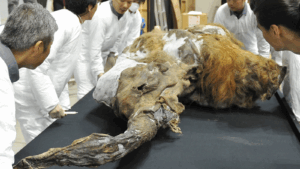

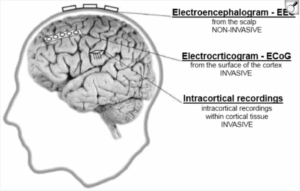
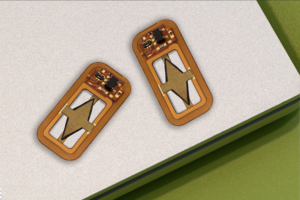
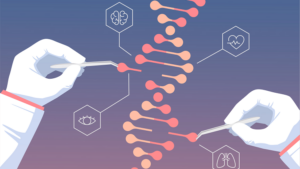
Be First to Comment